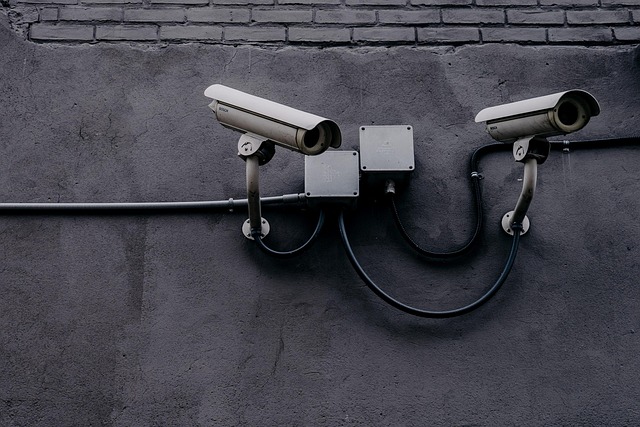Data Privacy in Government Facial Recognition Systems
The deployment of facial recognition technology by government agencies raises profound questions about balancing public safety with civil liberties. This emerging technology enables unprecedented surveillance capabilities while simultaneously creating significant legal challenges regarding constitutional protections. Recent court decisions have begun establishing boundaries for this technology's use, forcing legislators and agency officials to reconsider implementation policies. As systems become more sophisticated and widespread, understanding the legal framework governing facial recognition becomes increasingly crucial for citizens, lawmakers, and judicial officials tasked with interpreting existing statutes in light of rapidly evolving technological capabilities.

The Technology Behind Government Facial Recognition
Facial recognition systems employ complex algorithms to analyze facial features and create unique biometric templates for identification purposes. These systems typically work by capturing facial images, converting them into mathematical representations, and comparing these against existing databases. Modern systems have evolved from simple 2D mapping to sophisticated 3D modeling with deep learning capabilities. Government implementations range from border security systems that process millions of travelers annually to local law enforcement databases that can analyze footage from public surveillance cameras. The technological capabilities continue advancing rapidly, with recent developments including real-time recognition in crowded public spaces and integration with other biometric identifiers. These advancements have significantly expanded the potential applications while simultaneously amplifying concerns about accuracy, bias, and the scope of surveillance infrastructure.
Constitutional Questions and Legal Precedent
The Fourth Amendment’s protection against unreasonable searches forms the constitutional cornerstone for legal challenges to facial recognition technology. Several landmark cases have begun shaping the judicial understanding of these systems’ constitutional implications. In 2018, the Supreme Court decision in Carpenter v. United States established that certain forms of technological surveillance require warrants, though it did not directly address facial recognition. Lower courts have since issued mixed rulings on whether facial recognition constitutes a search under Fourth Amendment standards. First Amendment concerns also arise regarding potential chilling effects on protected activities when surveillance technologies monitor public gatherings. The legal landscape remains fragmented, with circuit splits emerging on key questions about reasonable expectations of privacy in public spaces when sophisticated surveillance technology is employed. These constitutional questions intersect with administrative law considerations regarding agency authority to deploy such systems without explicit legislative authorization.
Current Legislative Approaches Across Jurisdictions
State and local governments have adopted widely divergent approaches to regulating facial recognition technology. Several jurisdictions have implemented complete moratoriums on government use, while others have established specific authorization requirements. Maine and Virginia have enacted comprehensive laws requiring warrants for facial recognition searches in most circumstances. The California legislature passed measures requiring transparency reports documenting system use by government agencies. At the federal level, multiple bills have been introduced but none have advanced to passage, creating a patchwork regulatory environment. International approaches provide additional models, with the European Union’s comprehensive regulation through the AI Act establishing risk-based categories for facial recognition applications. Legislative efforts typically address core issues including authorized uses, retention periods for collected data, accuracy standards, and auditing requirements. These varied approaches reflect ongoing societal debate about appropriate constraints on governmental surveillance capabilities.
Algorithmic Bias and Legal Liability Questions
Research has consistently demonstrated that facial recognition systems exhibit varying accuracy rates across demographic groups, raising significant equal protection concerns. Studies from organizations including the National Institute of Standards and Technology have documented higher error rates for women and people of color across multiple commercial systems used by government agencies. These disparities create potential legal liability under both constitutional equal protection guarantees and statutory civil rights protections. Courts have begun considering whether algorithmic bias creates actionable discrimination claims when systems disproportionately misidentify certain groups. Legal questions remain unresolved regarding liability allocation between software developers and government agencies deploying these systems. Administrative law principles regarding arbitrary and capricious action may provide additional avenues for challenging biased systems. Recent settlements in misidentification cases have established precedents for monetary damages but without clearly establishing liability standards for future litigation.
Transparency Requirements and Judicial Oversight
Emerging legal frameworks increasingly emphasize transparency and judicial supervision for facial recognition systems. Several jurisdictions now require regular public reporting on system deployment, including search volumes, error rates, and demographic impact assessments. Judicial oversight mechanisms range from traditional warrant requirements to specialized review boards with technical expertise. Defense attorneys have raised significant challenges regarding discovery access to proprietary algorithms used in criminal prosecutions. Courts have issued conflicting rulings on whether defendants have rights to inspect algorithm source code or validation data when facial recognition evidence contributes to their identification. Administrative procedures for contesting misidentifications remain inconsistent across jurisdictions, with some agencies implementing formal appeal processes while others provide minimal remedial options. The tension between proprietary technology protection and due process requirements continues creating procedural complications in both criminal and civil contexts, forcing courts to balance competing interests without clear statutory guidance.





